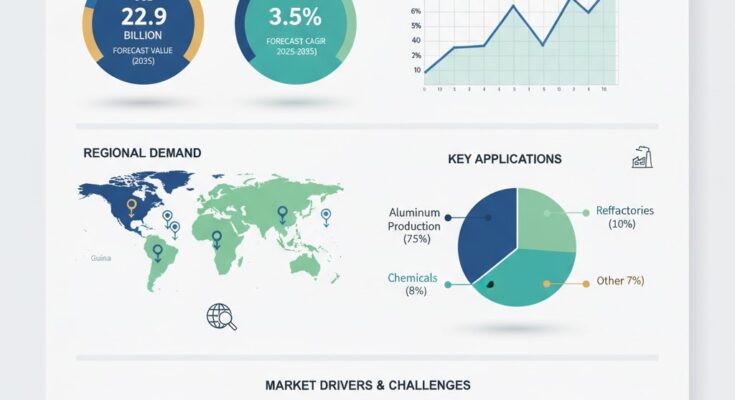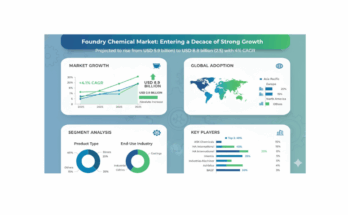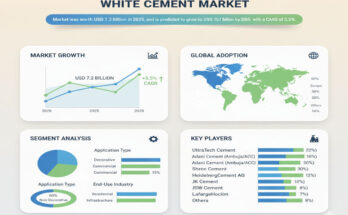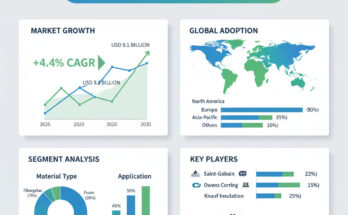The global bauxite mining market is poised for moderate yet steady growth as global demand for aluminum continues to climb, supported by industrial expansion, green energy initiatives, and sustainable mining practices. According to a recent report by Fact.MR, the market is anticipated to grow from USD 16.2 billion in 2025 to approximately USD 22.9 billion by 2035, recording an absolute increase of USD 6.7 billion over the forecast period. This translates into a total growth of 41.4%, with the market forecast to expand at a CAGR of 3.5% between 2025 and 2035.
Bauxite, the primary source of aluminum, is witnessing increasing extraction activities globally as industries move toward lightweight, energy-efficient, and recyclable materials. The expanding aluminum value chain spanning automotive, packaging, construction, and renewable energy sectors—is a major growth catalyst for the bauxite mining industry.
Market Drivers: Aluminum Demand, Green Energy, and Mining Innovation
Rising Aluminum Consumption in Key End-Use Industries
Global aluminum consumption is accelerating due to its versatility, corrosion resistance, and recyclability. From lightweight automotive components to renewable energy infrastructure and flexible packaging materials, aluminum’s expanding use case directly fuels bauxite demand. Emerging economies like India and China are at the forefront, with large-scale industrialization driving aluminum smelting capacity expansions.
Sustainability and Responsible Mining Initiatives
With increasing scrutiny over environmental practices, bauxite producers are adopting sustainable mining technologies, including low-impact extraction, water recycling, and land rehabilitation. Governmental and international organizations are enforcing environmental standards that encourage sustainable resource management, improving industry credibility and long-term viability.
Technological Advancements and Digitization in Mining Operations
Automation, remote monitoring, and AI-driven analytics are revolutionizing bauxite mining efficiency and safety. Companies are leveraging digital twins, drone surveying, and predictive maintenance to optimize ore quality and operational performance. These innovations reduce downtime, enhance productivity, and lower carbon footprints across mining sites.
Global Market Segmentation
The bauxite mining market can be segmented by ore type, application, end use, and region.
- By Ore Type: Trihydrate and Monohydrate bauxite dominate global extraction, with trihydrate bauxite preferred for alumina refining due to its high aluminum content.
- By Application: Alumina production remains the largest application segment, accounting for over 85% of total bauxite demand. Other uses include abrasives, refractories, and cement.
- By End Use: Aluminum production leads, followed by the construction and transportation sectors, where aluminum-based materials are used for lightweight structures and fuel efficiency.
- By Region: Major bauxite-producing regions include Asia-Pacific, Africa, and Latin America, with Australia and Guinea leading global production.
Regional Outlook
Asia-Pacific – The Global Hub of Bauxite Production and Consumption
Asia-Pacific dominates the global bauxite market, led by Australia, China, and India. Australia remains the world’s top producer, exporting large volumes to China’s vast alumina refineries. Meanwhile, India is expanding domestic mining capacity to support its growing aluminum industry.
Africa – Emerging Powerhouse in Bauxite Exports
Guinea, Ghana, and Sierra Leone are rapidly emerging as major exporters due to rich bauxite reserves and increasing foreign investments. Infrastructure development and government reforms are driving the region’s mining output and global competitiveness.
North America and Europe – Focus on Sustainability and Supply Security
While bauxite production is limited in these regions, demand remains strong due to aluminum-intensive industries. Companies in the U.S. and Europe are investing in sustainable sourcing and recycling initiatives to ensure supply chain resilience.
Competitive Landscape
The global bauxite mining market is moderately consolidated, with leading players investing in technological innovation, capacity expansion, and strategic partnerships to strengthen their market positions.
Key Players in the Bauxite Mining Market
- Rio Tinto
- Alcoa
- Rusal
- Norsk Hydro
- Vedanta
- Chalco
- South32
- EGA
- Hindalco
- Metro Mining
- Alliance Mining
- Guinea Alumina
- Ghana Bauxite
- Bosai Minerals
- Sinohydro
These companies are focusing on sustainable operations, resource optimization, and supply chain integration. Strategic collaborations with refineries and aluminum producers are also boosting vertical integration across the value chain.
Recent Developments
- June 2025 – Rio Tinto announced a new low-carbon alumina refining project in Australia using renewable energy sources to reduce greenhouse gas emissions by 50%.
- April 2025 – Guinea Alumina Corporation expanded its production capacity by 25%, strengthening its position as a global export hub.
- February 2024 – Vedanta Aluminium launched a digital mine management platform in India, enhancing operational transparency and safety through real-time monitoring.
Future Outlook: Toward a Sustainable and Digitally Advanced Mining Era
Over the next decade, the bauxite mining industry will witness a shift toward cleaner, smarter, and more efficient operations. Key trends include:
- Green Mining Practices – Greater focus on decarbonization, energy efficiency, and biodiversity conservation.
- Integrated Aluminum Value Chains – Stronger collaborations between miners, refiners, and end-users for cost optimization.
- Digital Transformation – Use of AI, automation, and IoT for improved ore quality management and productivity.
- Emerging Market Expansion – Rising investments in Africa and Asia-Pacific to meet growing global aluminum demand.
By 2035, the bauxite mining market will evolve into a more resilient, technology-driven, and sustainability-focused sector, underpinning the world’s transition to a low-carbon, circular economy.



